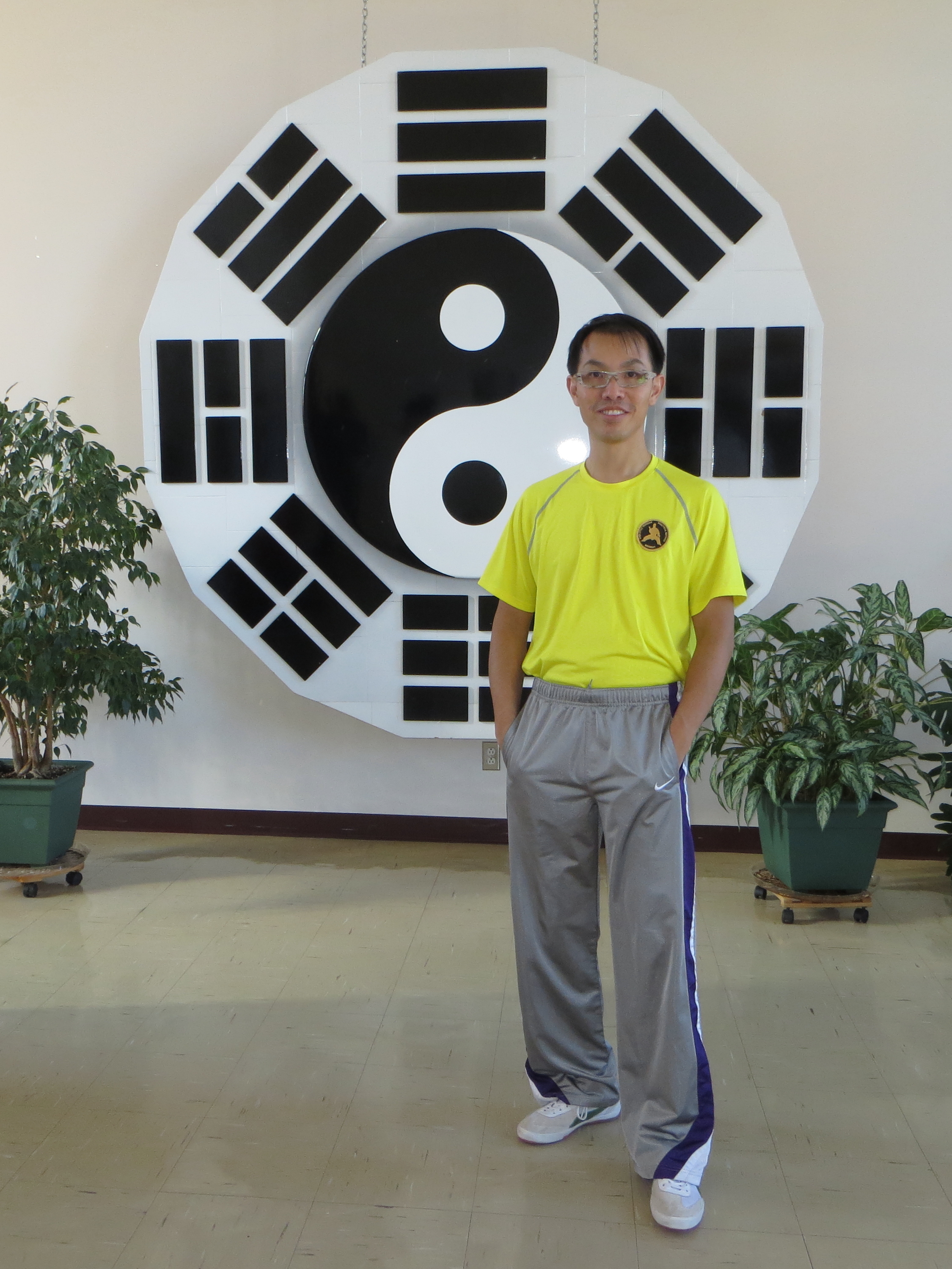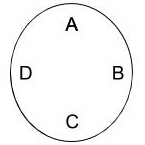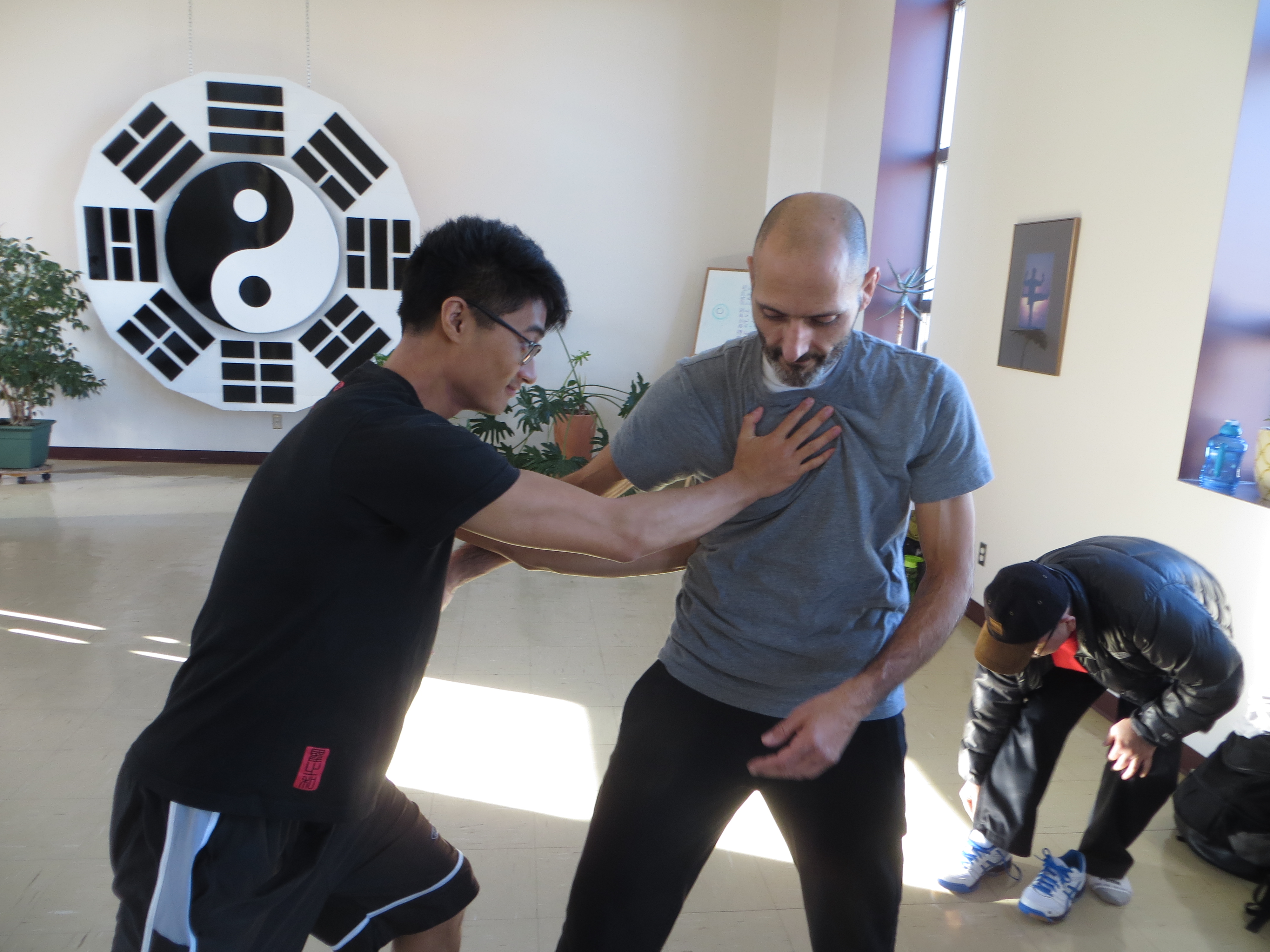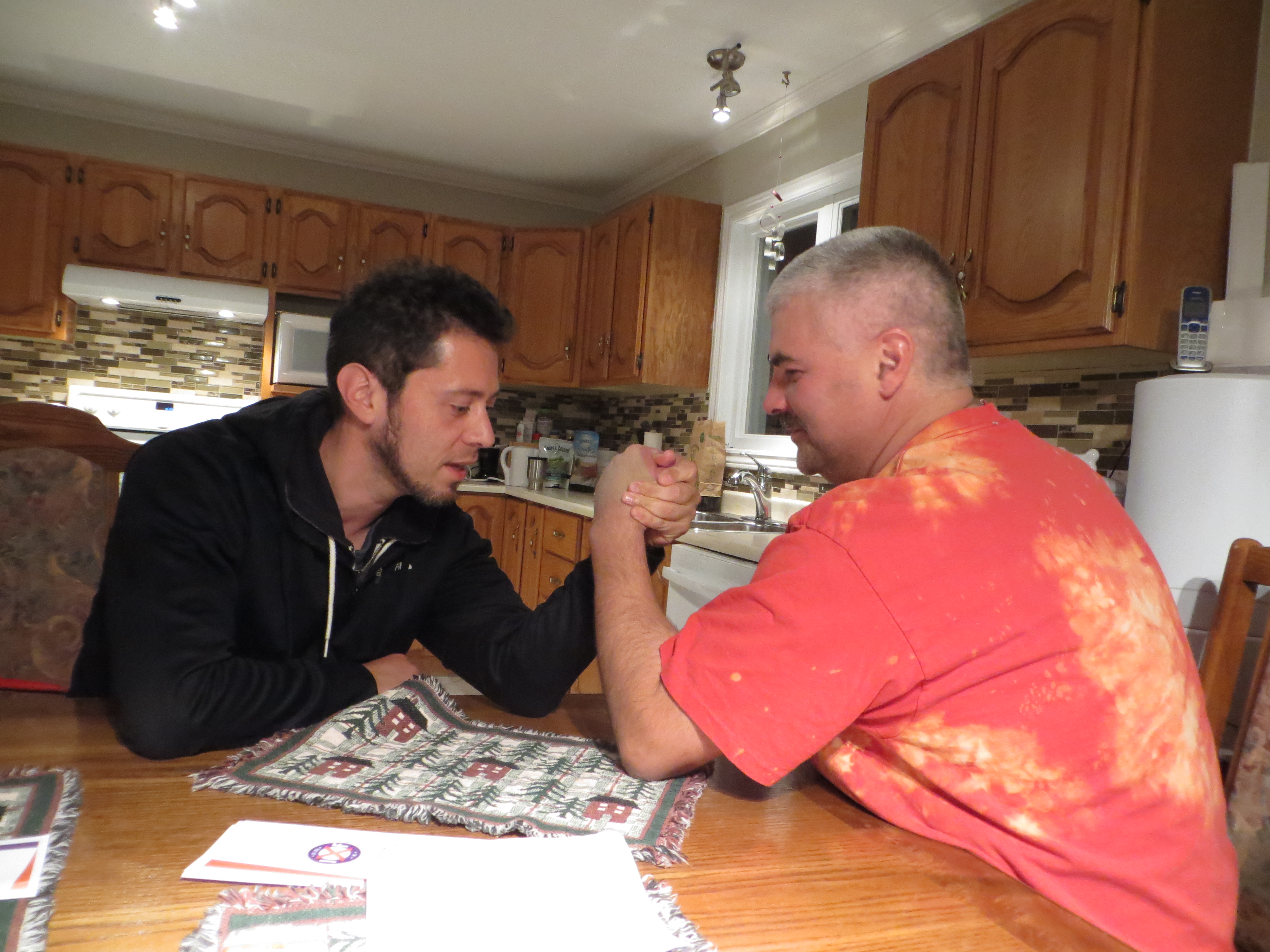Today, in my Angus Glen taiji class, I received a comment from the student indicating that what I taught was the same as what I was just demonstrating the way I practiced. The comment was primarily based on the look of the form. I was doing a much lower stance compared to theirs. I went on to explain that as one progressed one would need to keep challenging one's limit. Going low in the stance was one of the methods. It trained the leg strength, it allowed one to discover structure alignment, it locked up the body so one can train moving the parts one can't move before.
This incident reminded me of a story told by Master Chen Zhonghua that one of his students, now disciple, asked to learn the form he first saw meeting Master Chen. Master Chen's response was that he had been teaching the student that form, which was yilu all along, but in the student's mind, he was not the same.
Thursday, November 24, 2016
Sunday, November 13, 2016
Notes for Practical Method Ottawa Workshop Nov. 12-13, 2016

- Move the feet. When we train, we fix the feet. When you push hands, we move the feet. Our feet are often not mobile enough, we must force ourselves to move them, e.g. getting in changes the pivot.
- The only way to connect is not to connect. Connection means moving and non-moving parts have a relationship.
- We need to resolve change without change. When A moves to B or B moves to C due to a rotation of the circle, there is really no change from taiji's perspective.

- Twisting the towel, both hands are on the same line, palm faces down close to the body, palm faces up when the arm is extended. Line up the two dots (front hand and rear elbow). My eyes were not right, I couldn't line up the two dots.
- Learning must be direct, progress must be indirect.
- In with elbow, turn with waist. I am not starting the waist turn with the kua.
- Instructions must be obeyed.
- Every person has restrictions put on him by himself.
- Push hands: don't let you opponent test you. When the opponent charges, you must charge as well, never back off.
- Exercises:
1) You grab the opponent by the wrist, the opponent tries to shake it off by going up and down. In order to not getting shaken off and not let the shoulder take all the force, you need to resolve the shaking by stretching the rear kua.
2) You grab the opponent by the wrist, the opponent tries to move the hand back and forth. You must stay with the opponent.
3) You grab the opponent by the wrist, the opponent walks back and forth. You must stay with the opponent. - Saying: Stick to your opponent and die together, who does not want to die will get out.
- As you create space, you must fill it immediately.
- Don't push your opponent, pushing is a release and creates space.
- Rear foot to front kua is a stick that keeps poking into the opponent.
- Don't let your opponent fight the battle on your turf. Invade your opponent's homeland - Go over.
- Relate two dots with a non-moving third dot.
- 挨着哪儿哪儿打 - Wherever that is touched, that's where is used to hit
全身不处不是拳 - Any body part can be used as the fist (Literal translation: No body part is not the fist) - Switching - Use your hand to make your opponent feel strong, once engaged, switch to use power somewhere else.
Exercise: You had an arm bar on the opponent, your front foot is in front of the opponent's front foot. Once engaged, switch to a different pivot, and stretch your front foot back under the opponent's leg. At the end, step on the heel. Before stepping on the heel, all space must be taken out. - Tension and compression are the same, but the difference is in the perspective. Tension is going away from the non-moving point, while the compression is going towards the non-moving point on the same line.
- Fetch water - lock front knee or front hand, front shoulder down to find the front kua coming up.
- Converting the vertical to horizontal: Compress the front shoulder to front kua, and then rotate the waist from front kua to rear kua (this elongates the horizontal)
- Converting horizontal to vertical: Opponent comes in and pushes into the abdomen, compressing the opponent's elbow into his hand (which touches your abdomen), the stretch vertically to the head.
- 50,000 yilus is the new goal given to me. Go make the actions automatic for me.
- Gong vs Fa: Gong is the principle expressed in the action. Fa is the ability to do a technique. An old master has gong but not necessarily fa anymore. It is like a short blade knife. If you are stabbed with it, you will feel hurt, but you won't die. An old master can let the student feel the principle, and that's why he can still teach.
- Go voluntarily to where your opponent want you to go, and at the end add something to it.
- Shifu adjusted my fetch water, the rear shoulder needed to be much higher than I expected to line up with my front hand. He made me realize that once the front hand and the rear shoulder line up, there was power. Of course, the rear cannot be floating.
- Shifu asked me to train flexibility, move anything else except the dantian by stretching, especially move the feet. When someone pushes me, move some body part (do something) away from the contact point to buffer it. Keep the power constant like I am in the elbow in position.
- Keep the elbow in, and yet stretch the hand towards the opponent's centre.





Subscribe to:
Posts (Atom)